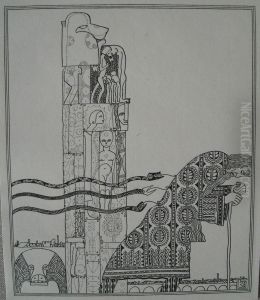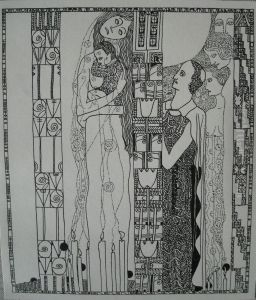Lajos Kozma Paintings
Lajos Kozma was a Hungarian architect, graphic artist, furniture designer, and interior decorator, recognized for his significant contributions to Hungarian art and design in the early 20th century. Born on June 22, 1884, in Turciansky Sväty Martin, which was part of the Austro-Hungarian Empire (now Martin, Slovakia), Kozma was a prominent figure in the Hungarian Secession movement, which was the local variant of the international Art Nouveau style.
Kozma's education in the arts began at the Royal Hungarian School of Applied Arts in Budapest, where he studied under prominent figures such as Aladár Körösfői-Kriesch and Sándor Nagy. His early work showed a strong influence of National Romanticism and Art Nouveau, but as his career progressed, he developed a more distinctive style that blended traditional Hungarian motifs with modern design principles.
Throughout his career, Kozma was deeply involved in various aspects of design and architecture. His most notable works include numerous residential buildings, public spaces, and ecclesiastical furnishings. He was also a skilled graphic artist, illustrating books and creating a range of graphic designs for different purposes.
During the interwar period, Kozma's style evolved, reflecting the shift towards Art Deco and functionalism. However, he never abandoned his commitment to integrating Hungarian stylistic elements into his designs. This is particularly evident in his furniture designs, which often feature intricate inlays and carving, combining modern forms with traditional craftsmanship.
Kozma's work was widely recognized and appreciated during his lifetime. He was a member of various artistic societies and often participated in exhibitions both in Hungary and abroad. Despite the challenges posed by the two World Wars and the changing political landscape in Hungary, Kozma continued to work and influence Hungarian design until his death on October 26, 1948, in Budapest.
His legacy endures, and today, Lajos Kozma is celebrated as one of Hungary's most influential designers, whose work continues to inspire designers and architects. His contributions are often studied not only for their aesthetic value but also for their reflection of the cultural and historical context of Hungary in the first half of the 20th century.

